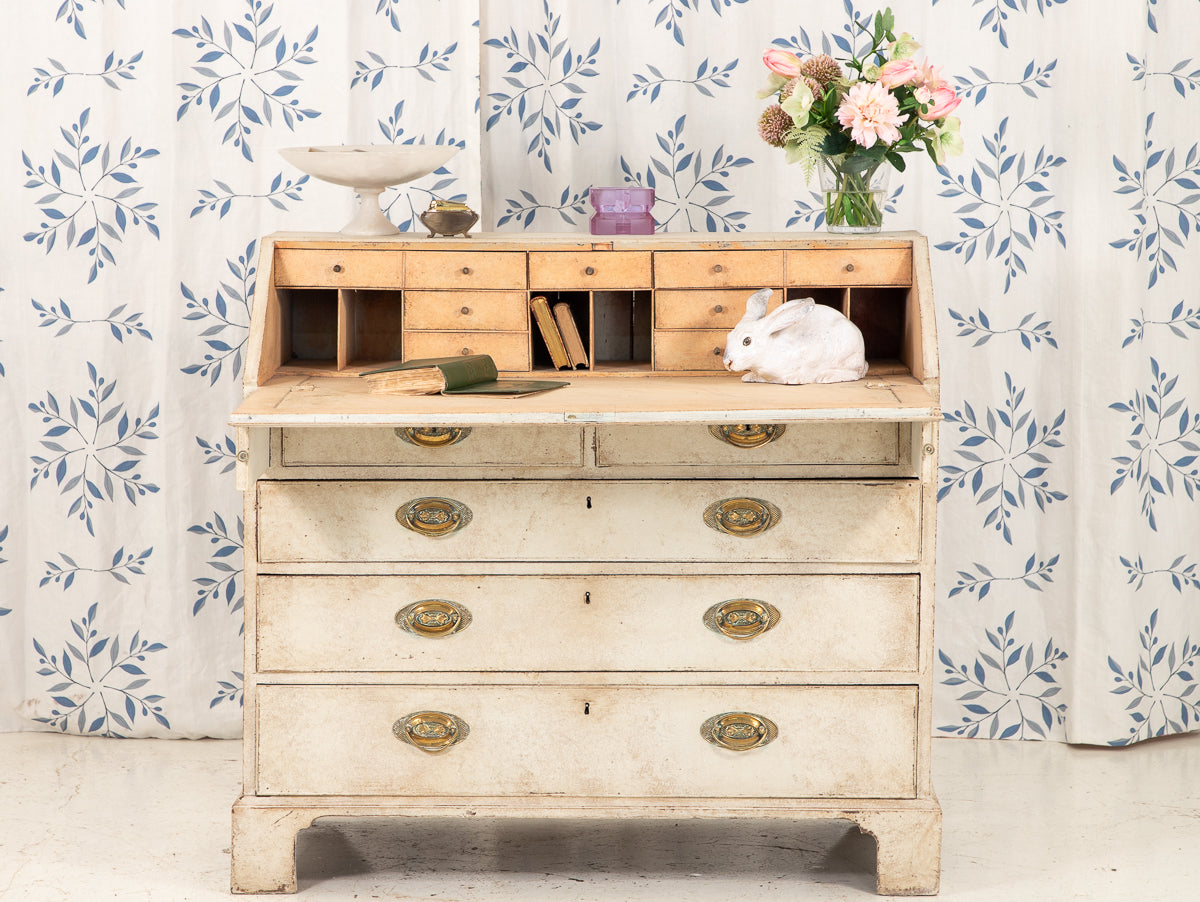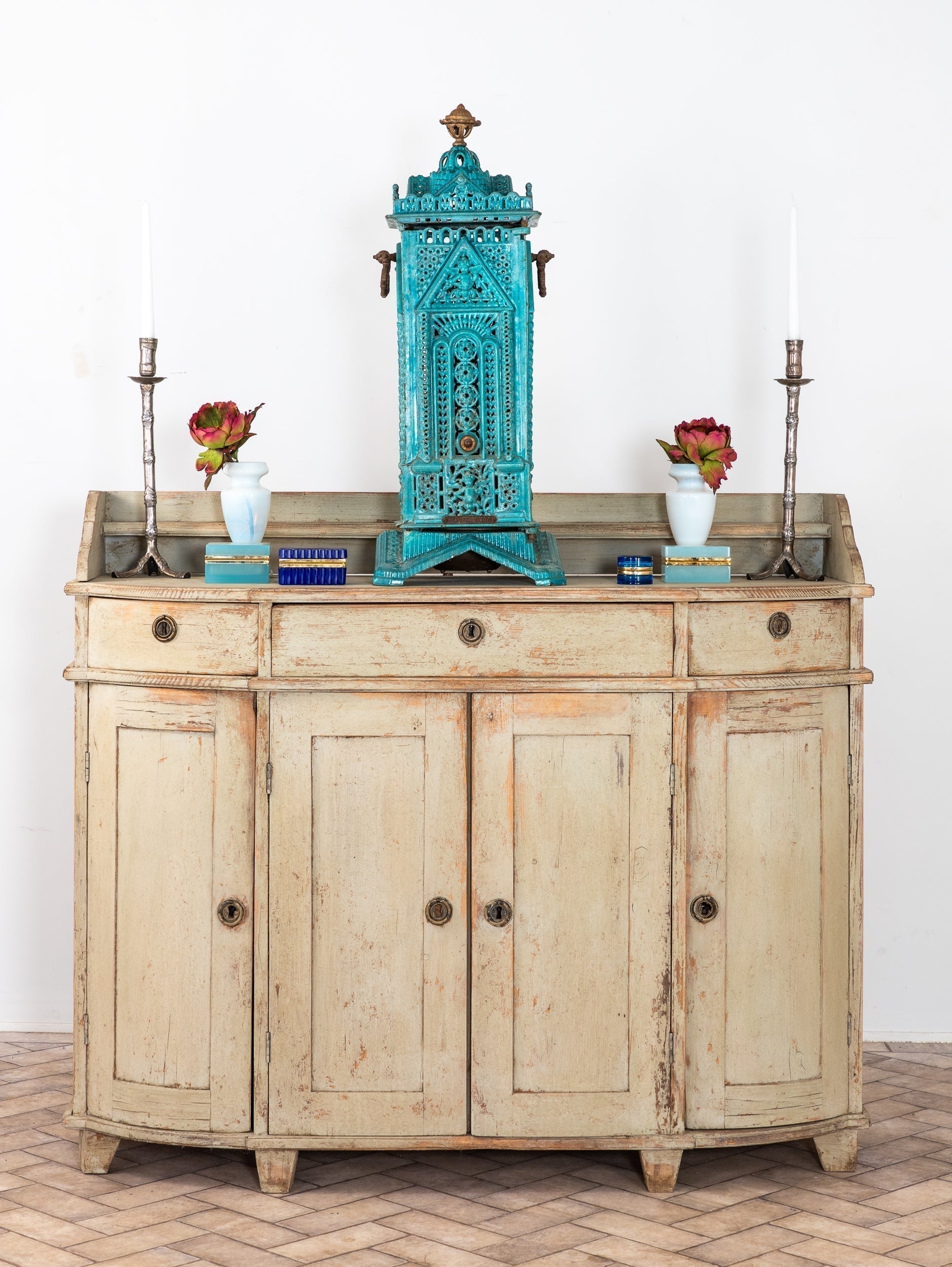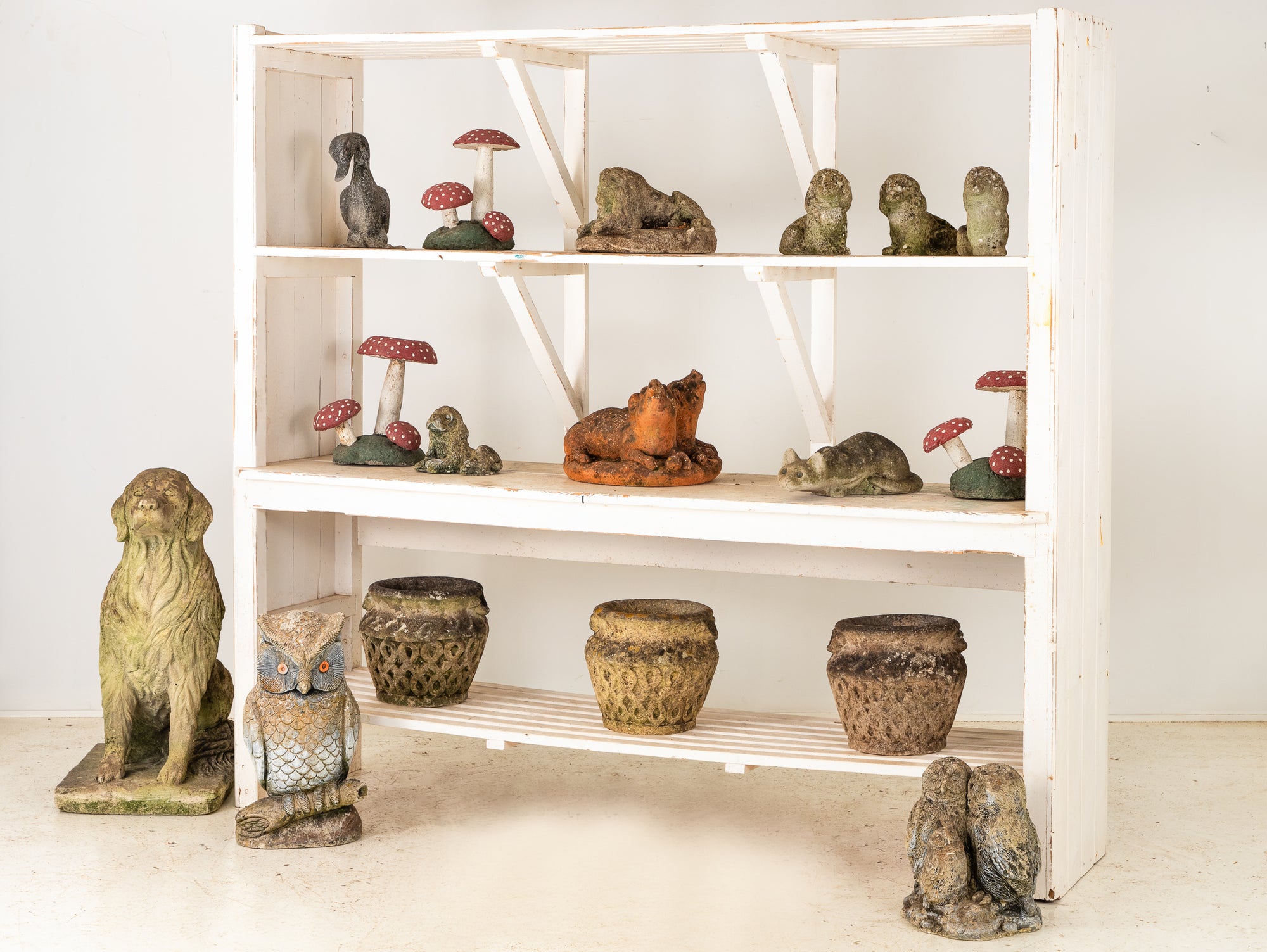Antique Study: The History of Writing Desks and Tools
Discoveries by The Lifestyle Historian

There is something undeniably romantic about the act of writing. Long before emails and text threads, correspondence was slow, deliberate, and deeply personal. The tools of writing, such as antique writing desks, inkwells, and leather-bound journals, were extensions of one’s intellect, artistry, and social standing. To study antique secretary desks and writing accessories is to uncover how people thought, worked, and communicated for centuries.
By the 18th century, literacy was spreading across Europe and America, and with it came an appetite for specialized antique furniture dedicated to writing. Imagine a Swedish merchant in the late 1700s, seated at a painted bureau, carefully balancing ledgers and correspondence. Our Late 18th Century Swedish Secretary Cabinet with Historic Paint captures this moment in time. Its pale blue surface and brass lion escutcheon whisper of hands that once lowered its fall-front to record trade agreements or pen letters carried across continents.
Across the Atlantic, Thomas Jefferson was known to carry a small lap desk or an early portable writing desk that allowed him to draft letters (and even possibly the Declaration of Independence!) while traveling. Though compact, its function mirrored that of larger antique secretaries which was to carve out a sacred space for thought.
By the 19th century, writing desks had grown more practical and also more expressive. Painted finishes, faux marble surfaces, and intricate detailing reflected the refinement of their owners. Consider the French Painted Secretary Desk with Fallfront: its faux marble writing surface and tiny drawers for stationery evoke the quiet ritual of a French lady’s afternoon of correspondence, sealed with wax and sent by hand.
For those who preferred natural elegance, richly veneered woods like the French Mahogany Louis Philippe Secretary offered gravitas. Its tooled leather writing surface speaks to the comfort of daily use, a desk that might just as easily hold ledgers as poetry. In Sweden, simpler bureaus such as the Swedish Secretary Bureau reflected Gustavian taste for clean lines and practicality.
Of course, a writing desk was never complete on its own. Its companions-antique inkwells, quill pens, blotters, and books-formed the true landscape of the writer’s world.
Take the Marble Inkwell, Italian and late 19th century, its polished stone and brass fittings
gleaming under candlelight. Beyond utility, it was a status symbol, much like silver cutlery at the dining table. A fine inkwell announced one’s seriousness about ideas and adorned the writing desk like a jewel.
The pens themselves tell a story of change. Until the early 19th century, quill pens dominated, cut by hand and prone to splinter. Then came the steel nib, mass-produced in Birmingham, England, by innovators like Josiah Mason. Affordable and durable, steel nibs democratized writing as clerks, shopkeepers, and students could suddenly write with ease.
Even stationery carried symbolism. In Victorian England, mourning stationery bordered in black became a social necessity, allowing households to communicate grief with propriety. One can imagine such paper neatly stacked in the tiny drawers of an antique French fall-front desk, awaiting the right occasion.
And what of the books? A study without books was incomplete. Our Set of Vintage Leather Bound Books evokes a time when volumes themselves were treasures featuring gilt spines, marbled edges, and soft leather bindings that signaled culture, learning, and permanence.
Why do antique writing desks matter today? In an age of laptops and smartphones, why should we care about antique writing desks and tools of centuries past? Because they remind us that creativity thrives in ritual. To lower the fall-front of a secretary, to dip a pen into ink, to rest one’s hand on cool leather, these actions slowed the mind, focused thought, and gave weight to words. Each mark of wear, each faded patch of paint, tells us that someone before us also struggled to find the right words, and also cherished the act of writing.
Designers today are rediscovering the beauty of antique writing desks, integrating them into modern interiors. Antique secretaries, once central to correspondence, now double as stylish home office stations, entryway organizers, or even personal mini-bars. Their compact fall-fronts are especially valued in smaller spaces.
Likewise, the tactile presence of vintage inkwells and leather-bound books has found new life as statement décor. Styled atop a secretary or a shelf, they lend texture, color, and narrative depth in a way that sleek modern accessories cannot. Even contemporary desk design borrows from these historic forms: the clean lines of Gustavian pieces, the symmetry of Louis Philippe desks, and the functional compartmentalization of bureaus appear in today’s workspaces and study rooms.
Whether you imagine yourself drafting letters at a painted French fall-front, surrounding your office with Gustavian serenity, or simply enjoying the tactile weight of leather-bound books, Modern Antiquarian offers antique writing desks, inkwells, and books that bridge centuries. These objects invite you to sit, pause, and reconnect with the art of writing.



